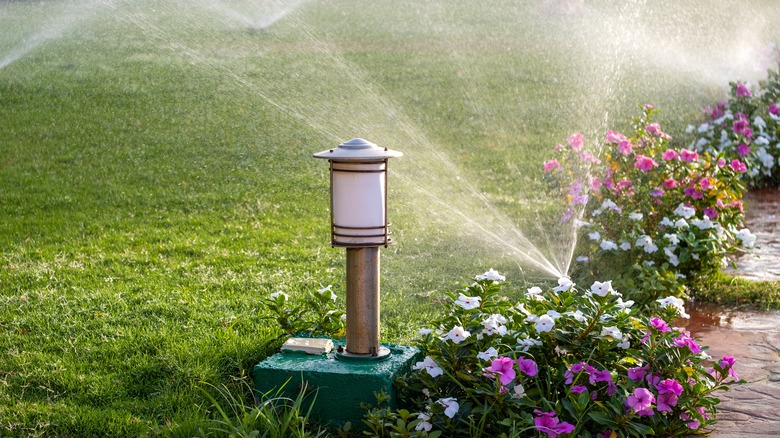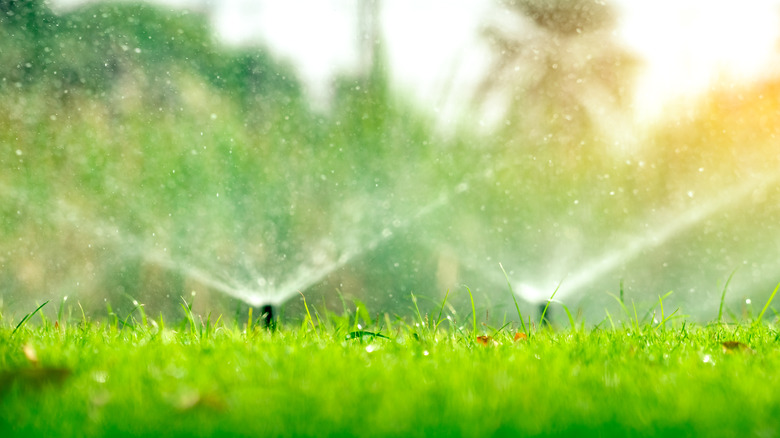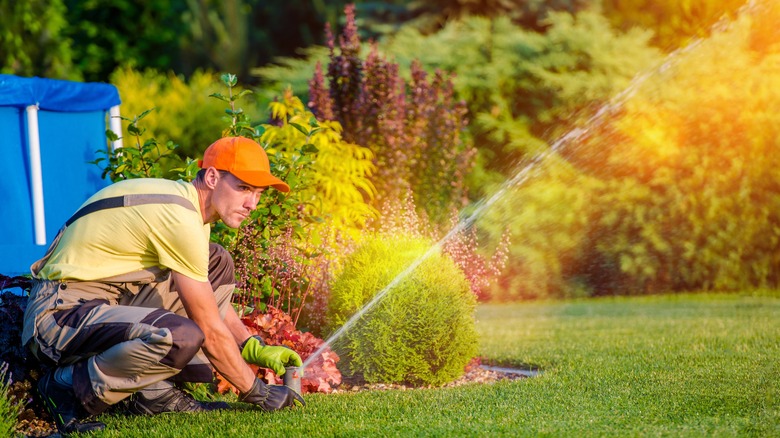What Should You Expect To Spend On A Lawn Sprinkler System?
Applying the correct amount of water to maintain your lawn helps your grass and garden stay vibrant and bright green. However, setting up the hose and moving the sprinkler around the yard can take up most of the day. Consequently, it's understandable why many people choose to install an automatic lawn sprinkler system. If you're considering this option for an average-sized piece of property, you can expect to spend about $2,500, although the cost can be as high as $5,000 to $10,000, which includes labor costs. Ultimately, the price of installing an automatic sprinkler system will depend on the size of the space that you want to water, the various bells and whistles that you want to add to the system, and the quality of the materials that you choose to use.
You may be able to save almost 40% on the cost of the installation by doing the work yourself. However, it can be challenging for someone without experience to install a sprinkler system for the first time without help. Designing the layout of the system is especially challenging in a DIY job, as you need to determine the number of heads to use, the location of each head, and the most efficient way to carry water to the heads. You need some plumbing skills to be able to connect the pipes into your main water supply. You may need some wiring skills, too, to connect the controller box to the system.
What are the primary cost factors when installing an automatic sprinkler?
If you are looking to save money on the installation of the automatic sprinklers, you have a few options. The control box is one of the priciest pieces of equipment for this system, ranging from $80 to $300. Some boxes offer a programmable timer to set up an automatic watering schedule, while others provide a Wi-Fi connection for control through an app. Select a basic controller to save money.
The type of sprinkler head plays a key role in the price, too. Some heads spin as they deliver the water, allowing them to cover more space and to better control the flow of the water versus a simple stationary head that doesn't rotate. The rotating heads cost more, though. Think about the space that you need to cover, as the rotating heads may end up being more cost-effective when covering a huge space. For areas with tender vegetation or in flower gardens, you may want to consider a misting or drip system that uses quite a bit less force to deliver the water than the typical head.
The size of the lawn is also a major factor in the cost. The average size of a lawn is about ¼ acres, which results in an automatic sprinkler system costing around $2,500. However, if you need to water ½ an acre, your price could be double the average. For a full acre, your cost could be four times the average.
Ongoing costs after installing a yard sprinkler system
When calculating the cost of installing a lawn sprinkler system, you should keep in mind that there are a few potential add-on and ongoing costs for maintaining and operating this type of setup.
At some point, you're going to have to endure a cost to repair the sprinkler system. No system is going to last forever without having a failure. You can expect to pay an average of $275 per repair call, although the actual bill can vary quite a bit, depending on the complexity of the work required. If you have pipes and heads spread over a huge area, it may take the repair person a long time to find the source of the problem, which drives up the bill. Most repair companies charge by the hour for labor, usually $50 to $100 per hour. Additionally, some broken parts will have a higher price to replace than others. In some cases, finding parts for an older system may be costlier than upgrading the broken sections to a new product.
When you choose to install a lawn sprinkler, you probably will see your water bill increase. If you run water on the grass every other day, a typical usage will be about 54,000 gallons of water per month. The price you'll pay for that extra water will vary quite a bit, depending on where you live and the water rates in your area.


